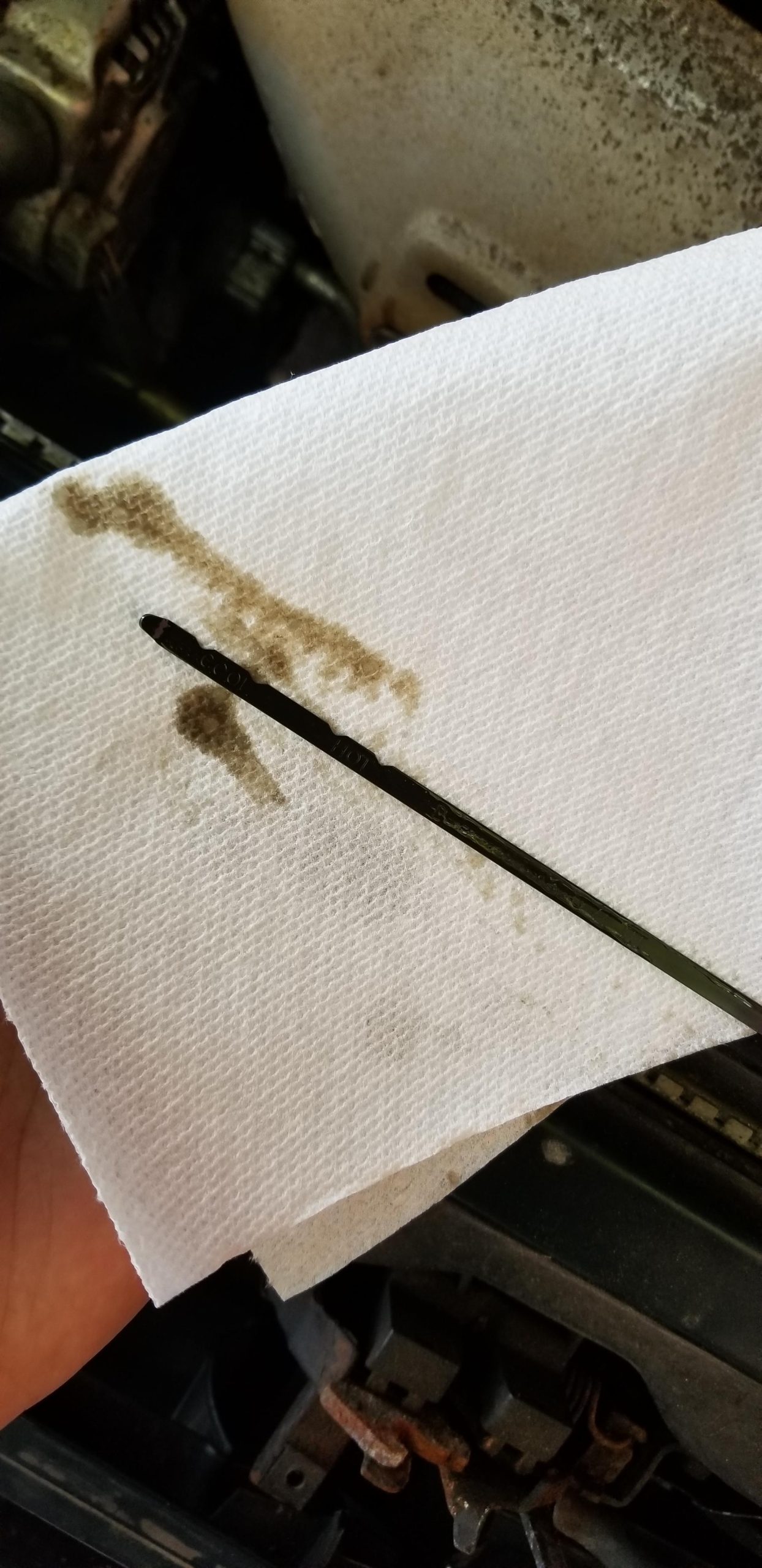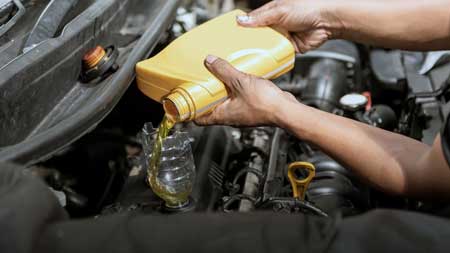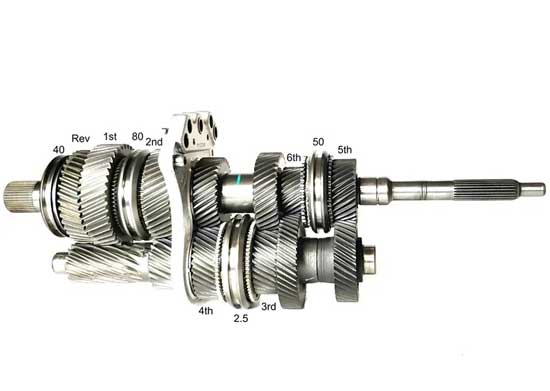Can Burnt Transmission Fluid Cause Slipping? Find Out Now.

Yes, burnt transmission fluid can cause slipping. Transmission fluid plays a crucial role in the functioning of automatic gearboxes.
It lubricates the transmission system, cools engine parts, and transmits power. If the fluid is burnt, it loses its smoothness and becomes less effective, which may lead to slipping. The transmission may create a whining sound, slide in and out of gear, or have difficulty shifting through gears.
The primary cause of burnt transmission fluid is overheating, which can be caused by overexerting the system, low fluid levels, or dirty filters. If the burnt transmission fluid is not replaced promptly, it can cause damage to the transmission and lead to costly repairs.

Credit: cartreatments.com
How Burnt Transmission Fluid Causes Slipping
Slipping transmission is a frustrating and dangerous problem faced by vehicle owners. Several factors can cause it, including low transmission fluid levels or using substandard transmission fluid. But, did you know that burnt transmission fluid can cause slipping as well?
Read More About: JWS 3309 Transmission Fluid Equivalent
Effects Of Burnt Transmission Fluid On Transmission
Transmission fluid works as a lubricant and keeps the transmission’s internal components running smoothly. Over time, heat generated during normal transmission operations can break down transmission fluid resulting in what’s known as ‘burnt transmission fluid’. When the transmission fluid burns, it becomes thick and loses its lubricating properties.
Here is the impact of burnt transmission fluid on the transmission:
- Incorrect shifting: The transmission relies on properly flowing fluid to regulate the shifting’s timing and smoothness. Burnt transmission fluid can cause shifting to become delayed or harsh, causing your vehicle to jump or jolt unnaturally.
- Slippage: The lack of lubrication caused by burnt fluid can make the clutch plates slip, causing gears to grind and producing a friction-like sound. This can cause the vehicle to fail to stay in gear, decrease its speed and even reduce power.
- Overheating: When the transmission starts slipping, it works harder to compensate for the problem, which can lead to overheating. Overheating can cause other transmission components to break down or even fail prematurely, requiring costly repairs.
Impact Of Varnish And Deposits On Transmission
Burnt transmission fluid creates varnish and deposits on the transmission’s internal areas, leading to various problems. Here are the impact of varnish and deposits:
- Clogs: Burnt transmission fluid creates particles and deposits that can build up clogging the hydraulic system of the transmission, which can lead to more significant and costly issues over time.
- Sticky valves: Varnish formations and deposits can also affect the valves’ operation responsible for the regulation of the transmission fluid’s pressure. Due to stickiness, valves fail to function as per the requirement, causing the transmission to slip.
- Heating the transmission: Varnish deposits can trap heat inside the transmission, leading to defective functioning and poor performance.
Irrespective of whether you’re experiencing slip or poor performance, you must always be vigilant when it comes to transmission fluid and its maintenance. By being proactive about your vehicle’s health and reacting promptly to any mechanical issues, you can save money and make your car more reliable.
Burnt transmission fluid can cause transmission slipping and additional mechanical issues. By understanding the effects of burnt transmission fluid and varnish/deposits on transmission, you can take the right steps towards maintaining your vehicle’s overall health. So, make sure to keep an eye on your vehicle’s transmission fluid levels and service it regularly to avoid such issues.
Signs Of Burnt Transmission Fluid
Transmission fluid plays a crucial role in the proper functioning of the transmission. It serves many purposes, such as cleaning, lubricating, and cooling the transmission. Burnt transmission fluid is a sign that something is not right with the transmission system.
Here are some signs of burnt transmission fluid to look out for:
Changes In Fluid Color And Odor
Transmission fluid has a bright red appearance, and over time, it darkens due to contamination. A brown or black color with a burnt odor is an indication of a problem. The burnt odor is caused by high temperatures and indicates that the transmission is overheating and causing the fluid to break down.
Here are some signs to look out for:
- Brown or black fluid color with a burnt odor
- Difficulty in shifting gears due to inadequate fluid pressure
- Increased vibration or shuddering while driving
- Reduced fuel efficiency due to increased friction within the transmission
If you notice any of these signs, the transmission system needs to be checked immediately by a professional.
Slipping Gears And Transmission Overheating
Slipping gears is another sign of a burnt transmission fluid. It happens when the transmission starts to lose grip on the gears, causing them to slip out of place. This can cause significant damage to the transmission if not addressed immediately.
Here are some symptoms of slipping gears:
- Delayed shifting or lack of response from the transmission
- Inconsistent or erratic shifting
- Unusual grinding or whining noises coming from the transmission
- Transmission overheating due to excess friction from slipping gears
Warning Lights And Strange Noises
Warning lights on the dashboard are an indication that the transmission system is malfunctioning. Any strange noises, such as grinding or buzzing sounds, could indicate a problem with the transmission. Here are some warning signs:
- Check engine light illuminated on the dashboard
- Transmission temperature warning light flashing or appearing
- Sudden changes in engine rpms or engine stalling
- Unusual sounds coming from the transmission, such as buzzing or grinding noises
Burnt transmission fluid is a sign of a problem with the transmission system that needs to be addressed immediately. By paying attention to these signs of burnt transmission fluid, you can have your vehicle checked and repaired before the problem worsens.
Prevention Of Burnt Transmission Fluid
Changing your car’s transmission fluid regularly, avoiding high temperatures, and checking for leaks are some of the most effective methods to prevent burnt transmission fluid and slipping. Here’s how:
Changing Transmission Fluid Regularly
Regular fluid changes help keep the transmission healthy and avoid expensive repairs. Proper maintenance, along with the right intervals, ensures that you have excellent fluid quality. Consider the following points when changing your car’s transmission fluid:
- Follow the manufacturer’s instructions for replacing the fluid
- Use the type of transmission fluid specified by the manufacturer
- Consult a professional if you are uncertain about the proper type of fluid or the ideal frequency of replacement
Proper Maintenance And Avoiding High Temperatures
Heat is one of the primary reasons why transmission fluid becomes burnt and causes slipping. Hence, proper maintenance and avoiding high temperatures are crucial. Here are a few tips:
- Clean or replace transmission filters regularly
- Use a transmission cooler to avoid overheating
- Use the right gear for the driving conditions
Checking For Leaks And Addressing Them Promptly
Leaking fluid is one of the most common reasons for burnt transmission fluid, and addressing them promptly can prevent significant problems. Inspect your vehicle frequently, and promptly fix any leaks to avoid burnt transmission fluid. Here are some things to keep in mind:
- Check for signs of leaks, such as fluid on the floor of the garage, the smell of burning fluid, or a low transmission fluid level
- Replace any damaged or worn seals and gaskets
- Consult with a professional if you are unsure how to address leaks in your car’s transmission system
Fixing Burnt Transmission Fluid
Can burnt transmission fluid cause slipping? Find out now.
If you have recently experienced slipping, jerking or rough shifting while driving, you may want to check your transmission fluid. Burnt transmission fluid can cause various transmission issues, including slipping.
Cleaning And Replacing Contaminated Parts
Cleaning and replacing contaminated parts is a good option to fix burnt transmission fluid. However, this option requires removing the transmission from the vehicle, disassembling it, inspecting all the parts, and replacing all damaged or worn parts, including the clutch packs, gears, and bearings.
Here are the key points to keep in mind before attempting to clean and replace contaminated parts:
- Cleaning and replacing contaminated parts require professional expertise, so don’t try it on your own.
- Get ready for a time-consuming process that may take several days.
- Replacing worn parts can also be expensive.
Repairing Or Replacing The Whole Transmission
If you have severe transmission issues due to burnt transmission fluid, repairing or replacing the entire transmission is the only solution. This option is also expensive, so here are the key points to keep in mind before repairing or replacing the entire transmission:
- Replacing the entire transmission is often more expensive than repairing.
- Ensure that the chosen mechanic or repair shop is reputable and has experience in transmission rebuilds.
- Rebuilt transmissions come with a warranty, while new transmissions come with manufacturer warranties. However, beware that not all transmission warranties cover burnt transmission fluid issues.
Cost Implications And When To Seek Professional Help
Lastly, when dealing with burnt transmission fluid, the cost implications and when to seek professional help should not be ignored. Here are the key points to keep in mind:
- The cost of repairing or replacing a transmission depends on the make and model of your vehicle, the transmission type, and the extent of the damage caused by burnt transmission fluid.
- Seeking professional help is always recommended. Diy fixes often make the problem worse and can lead to more expensive repairs in the future.
- Regular maintenance of your vehicle’s transmission can prevent burnt transmission fluid issues from happening.
Burnt transmission fluid can cause slipping and other transmission issues, requiring cleaning and replacement of contaminated parts, repairing or replacing the entire transmission. However, if you are not sure about the best solution, always seek a professional mechanic’s advice before attempting any repairs.
Regular maintenance can also minimize burnt transmission fluid issues and prevent costly repairs.
Frequently Asked Questions On Can Burnt Transmission Fluid Cause Slipping
Can Burnt Transmission Fluid Cause Slipping?
Yes, burnt transmission fluid can cause slipping in your vehicle. If your transmission fluid smells burnt or appears dark, it could indicate that the fluid is no longer effective. This can cause slips, delayed shifting, or even complete transmission failure if not addressed promptly.
How Do I Prevent My Transmission Fluid From Burning?
The best way to prevent burnt transmission fluid is by changing it regularly. Transmission fluid breaks down over time and loses its effectiveness, so it’s essential to have it changed every 30,000 to 60,000 miles. Also, ensure that your car does not overheat as heat can damage transmission fluid.
What Does Burnt Transmission Fluid Smell Like?
Burnt transmission fluid smells like something burning, sometimes similar to toast or burnt popcorn. A burnt odor indicates that the fluid has overheated and lost its lubricating ability, potentially resulting in damage to the transmission. If you smell an odor like this, get your transmission fluid checked.
What Is Causing My Transmission Fluid To Burn?
Transmission fluid can burn due to overheating, low levels, or contamination from worn-out clutch material. A lack of regular maintenance, such as failure to change the fluid regularly, can also result in burnt fluid. Additionally, an electrical or mechanical fault in your vehicle’s transmission may cause it to overheat, thus burning the fluid.
Can I Still Drive My Car With Burnt Transmission Fluid?
While it may be possible to drive short distances with burnt transmission fluid, it’s not recommended. Burnt transmission fluid no longer lubricates the parts of the transmission, making it susceptible to damage. If you continue to drive your vehicle with burnt transmission fluid, you could cause irreversible damage, leading to costly repairs in the future.
Conclusion
Based on the information presented, it is clear that burnt transmission fluid can indeed cause slipping. As such, it is crucial to ensure that your vehicle’s transmission fluid is regularly checked and replaced if necessary. While a slipping transmission can be a sign of several issues, including low fluid levels and worn-out parts, burnt transmission fluid remains a common culprit.
The good news is that catching the problem early can help prevent further damages and expensive repairs. So, if you notice any signs of a slipping transmission, such as delays in acceleration or unusual sounds, it’s best to take your vehicle to a trusted mechanic for assessment.






